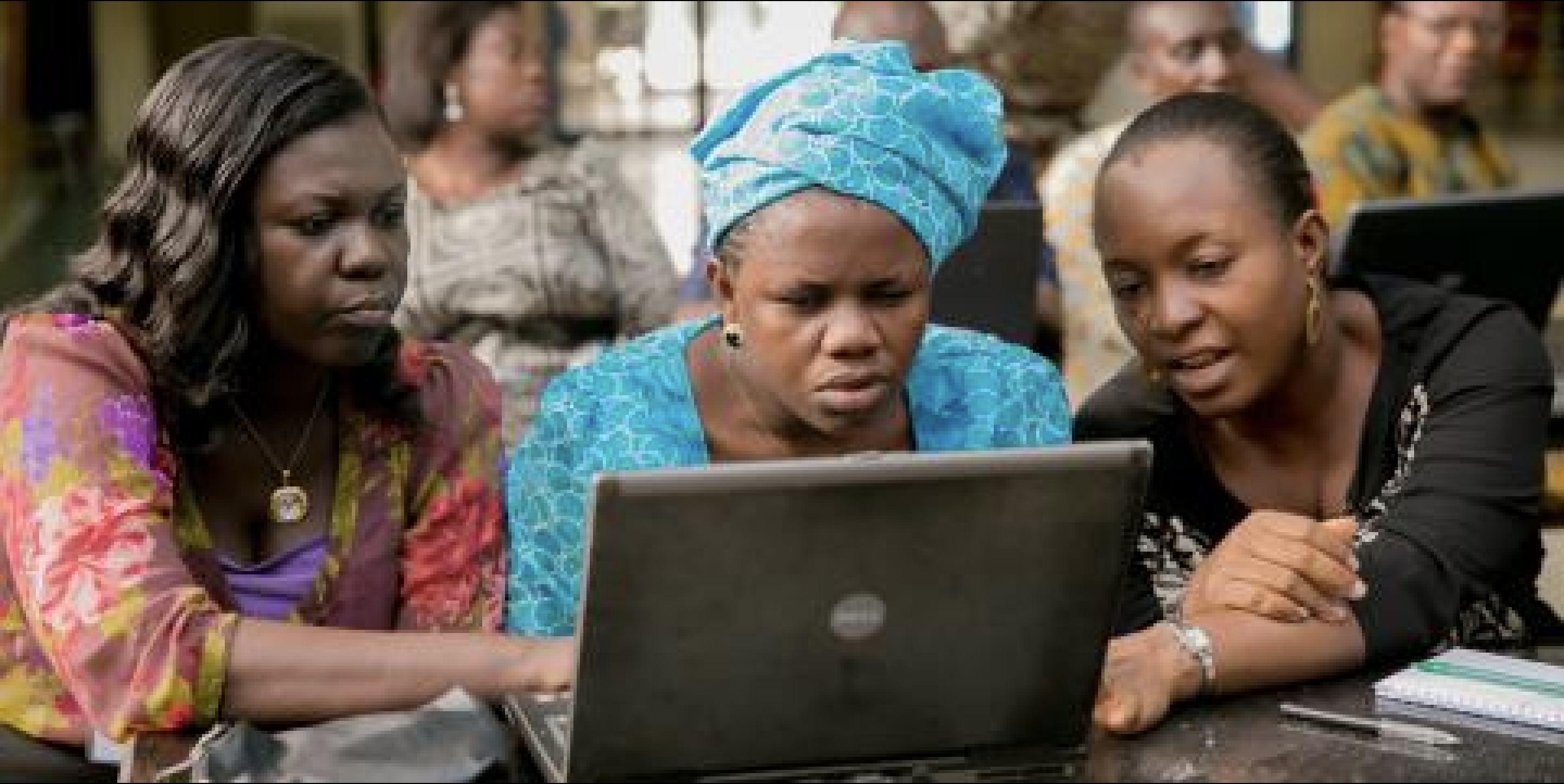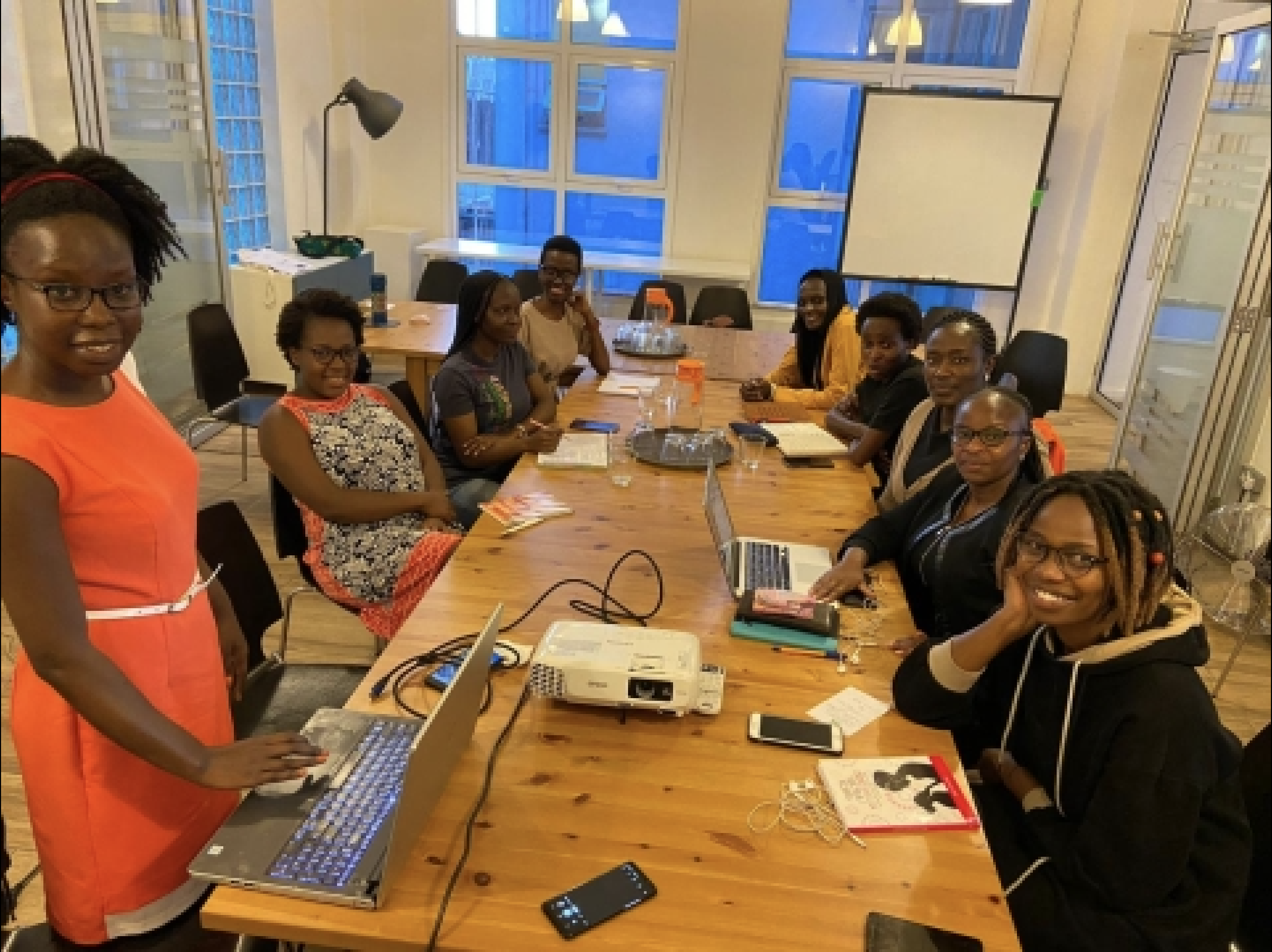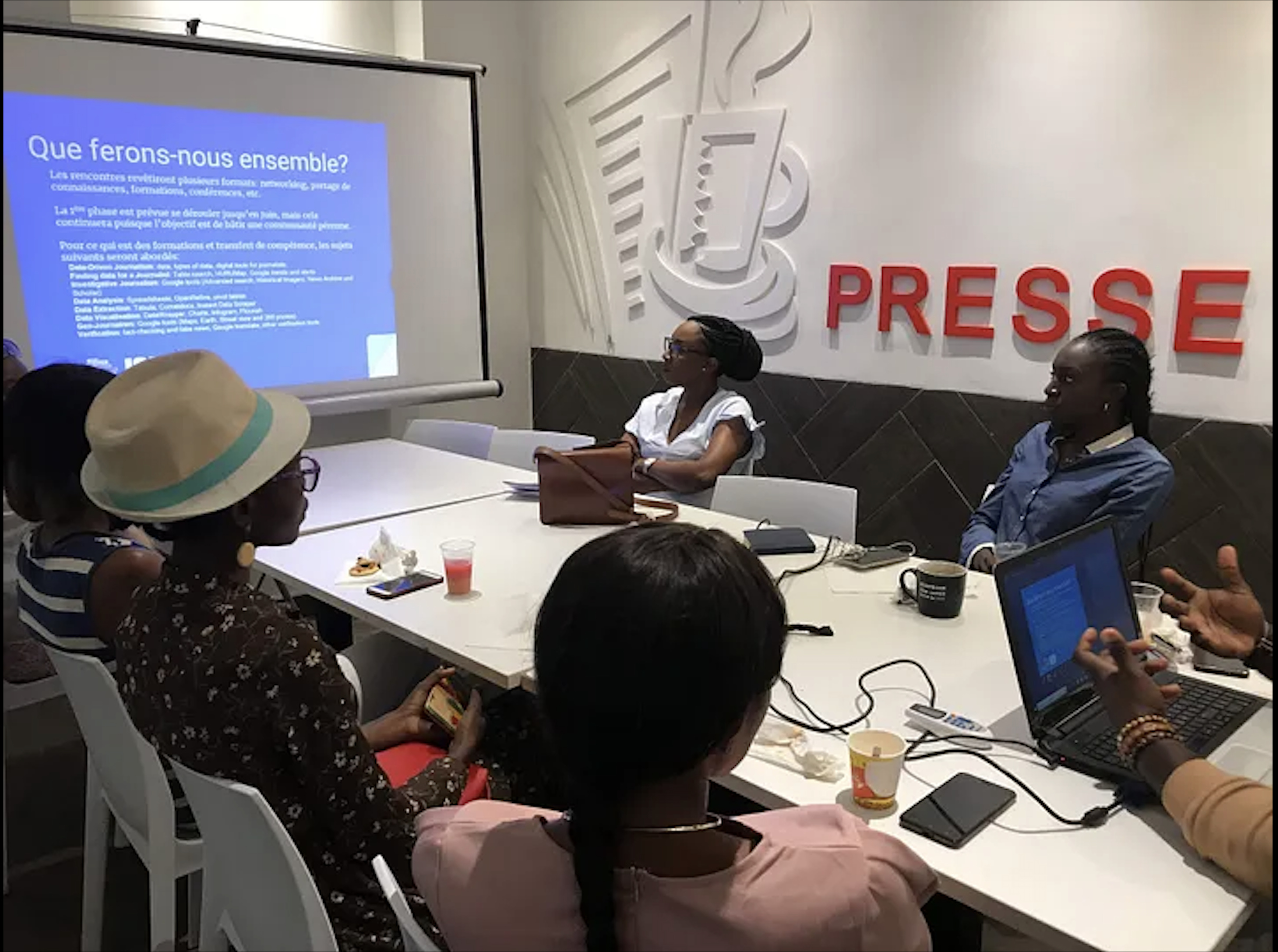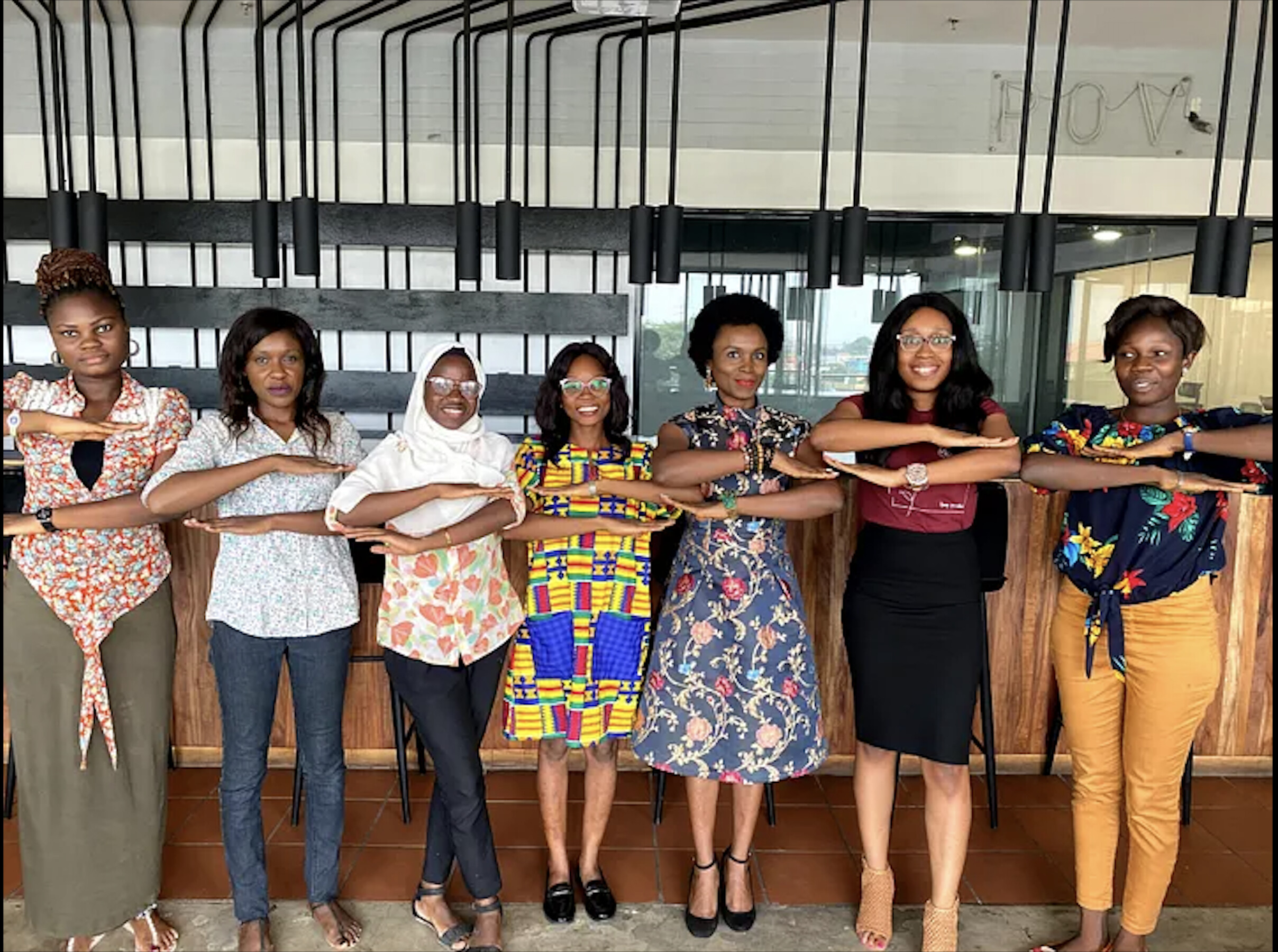Through producing and promoting data-driven projects and applying digital technologies in storytelling, a growing network of African women journalists, data scientists, and technologists
Differentiating between the myths and realities of human trafficking in regions where little tangible knowledge and data exist can be a mammoth challenge. But in southern Africa, Code for Africa—the continent's largest civic technology and data journalism initiative—uncovered the true scale of child trafficking by simply analysing data that was publicly available.
In Nigeria, journalists Omolola Afolabi and Bukola Adebayo used data to expose petrol-contaminated water in the Baruwa community in Alimosho Local government area of Lagos state. The two female journalists are both members of WanaData, a pan-African network of female data scientists, journalists, and technologists working to change the digital landscape by producing and promoting data-driven projects while applying digital technologies in storytelling.
WanaData, which in the Swahili language means “Daughters of Data”, is an initiative by Code for Africa. It was first established in Nigeria in 2017 under the name “Naija Data Ladies” but has since expanded to Kenya, Tanzania, Uganda, South Africa, Cameroon, Mali, Ivory Coast and Senegal.

Now operating virtually across the continent, WanaData boasts more than 200 members who collaborate on cross-border reporting projects that incorporate data visualisation, artificial intelligence, drone journalism and other innovative approaches. It aims to turbo-boost networks of African women and contribute to their socio-economic empowerment by liberating gender data, amplifying their voices through data journalism, fast-tracking careers and deepening expertise in tech, data science and journalism.
Why Data?
Today, large troves of data gather dust in government offices across Africa unused, denying decision makers and changemakers the opportunity to draw valuable insights. Data can reveal facts that hide in plain sight. Jacopo Ottaviani, an award-winning computer scientist who manages Code for Africa's data portfolio as Senior Strategist notes that data journalism is all the more important today because of its ability to represent factual information and frame social issues in a compelling manner backed by evidence.
“Data visualisation skills allow us to take the audience on a visual and relatable journey where the data is easier to consume and interact with,” Ottaviani tells Al Jazeera Journalism Review (AJR) in an email.
Unlike traditional text-based reports, he adds, visualisations provide a way for people to interpret data more accurately and more quickly. This makes complex data sets accessible and engaging to a wider audience. “Data visualisations have the additional benefit for their simplicity in delivery.”

WanaData offers newsrooms a fresh perspective on data and investigative journalism. By incorporating digital technologies, it has been able to empower journalists to uncover hidden truths and present them in visually compelling ways, thereby enhancing the overall impact of their storytelling and driving meaningful change.
“There has been a shift in news consumption towards multimedia content among audiences, especially with the rise of more capable digital devices,” Ottaviani asserts. “Our emphasis on data and data visualisations is informed by this shift in consumer preferences.”
WanaData receives support from such professional entities as the International Centre for Journalists, the Pulitzer Centre, and Google News Initiatives. Its members receive editorial support as well as access to a wide range of experts and tools, reporting projects, microgrants, mentorships, and fellowships, as well as training and networking events.
WanaData Testimonies
WanaData takes its members through the different phases of the data storytelling process, including sourcing, cleaning, analysing, and visualising the data. This has enabled journalists to do more impactful stories backed by data and even nudged governments to act.
Bukola Adebayo, a Nigerian journalist with more than a decade of reporting experience for local and international media, including The Punch Newspaper and CNN, attests to seeing her career blossom thanks to WanaData mentorship. Adebayo’s encounter with WanaData started with a story on illegal sand dredging and mining that was threatening lives in coastal communities in Lagos, which she co-wrote with another female journalist, Tina Armstrong. Code for Africa helped them create compelling data-driven elements, which greatly enhanced the impact of their digital storytelling.

“It was the first immersive storytelling on any digital media platform in Nigeria,” said Adebayo, who is currently serving as Inclusive/West Africa correspondent for the Thomson Reuters Foundation.
“When we published the story in 2017, no media outlet in Nigeria was dedicating resources to this story format. [The story] opened doors for me, ultimately leading to opportunities to work for CNN,” Adebayo tells AJR. Adebayo said readers were brought “directly into the issue and location” when they incorporated drone footage, satellite imagery and maps into the story. Thanks to the mentorship she received, she was able to create graphics in her climate- and environment-related stories. “Their guidance was invaluable, helping us [dig out] data for our reports,” affirms Adebayo. “The support significantly expanded the frontiers of visual storytelling in the Nigerian media. I currently work for a newsroom equipped with resources for data illustrations and journalism.”
For her part, Olubunmi (Bunmi) Yekini, a Nigerian journalist with nearly 20 years of experience working with Radio Nigeria, acknowledges that WanaData has helped transform her from a radio journalist to a multimedia journalist and media advocate. “The monthly meetups in Victoria Island were particularly valuable, offering training and data visualisation tools like Tableau, Infogram, and Flourish [an intuitive platform that helps users create easy-to-use visualisations in a collaborative way],” Yekini tells AJR. “Despite being a radio journalist at the time, I was keen to learn these tools. Now, as a multimedia journalist, I seamlessly transition my storytelling from radio to multiple platforms,” she says.
While still specialising in radio, Yekini has now embraced digital technologies for storytelling on such social media platforms as WhatsApp, Instagram, and TikTok.
In the newsroom, she uses social media short videos that incorporate text, charts, and images to promote reports and programmes. Yekini today views digital technology in storytelling as a “transformative, captivating, and immersive” venture. “With the help of tools like Canva, CapCut, and Infogram, I can now combine text, audio, images, and even video to create short, yet richer stories,” she says.

In 2019, Code for Africa and partners worked with Makoko, a water-front settlement in the centre of Lagos grappling with difficult conditions, to create a bottom-up, open-source map of the area using drones, smartphones, and crowdsourcing. The mapping project was captured in a flagship story produced by international media partners.
Yekini, who was part of the collaborative project, produced a radio documentary, which she later publicised using an audiogram and short videos on her social media platforms. “I am passionate about data-driven stories as they simplify and elucidate issues, lending credibility and accuracy to my stories,” she says.
Yekini’s passion for data journalism is, however, hindered by an existential challenge: the absence of updated and harmonised data. “This makes it difficult to know which source to quote,” she laments. “Accessing accurate data is often hindered by restrictions and bottlenecks. Even using the Freedom of Information Act does not guarantee data availability.”
Fellow WanaData member Bukola Adebayo shares this worry, pointing out that getting reliable and up-to-date data from Nigeria and Africa in general, particularly in health, climate, or the environmental sectors, remains problematic. “However, I keep knocking on the doors of researchers when I have the opportunity,” she said.
Ottaviani identifies three main hurdles that bedevil the progress of data-driven journalism in Africa, especially for women: rise in mis/disinformation which prevents women journalists from pursuing careers in journalism; the online and offline safety of women journalists; as well as the lack of women representation in data.
“WanaData is working side-by-side with industry experts in the fact-checking, science, and cyber security fields to ensure that female journalists, data scientists, and technologists are better equipped to deal with these challenges,” he said.
Navigating the Hurdles of Data-Driven Journalism
With support from the German cooperation agency, GIZ, Code for Africa launched a transnational reporting project dubbed trafficked.AFRICA in 2019 to portray the national and international dimensions of human trafficking. Despite the absence of police and government data, Code for Africa partnered with various agencies across Africa, including New Frame in South Africa, the Ink Centre for Investigative Journalism in Botswana, and Carta de Mozambique in Mozambique, to conduct on-the-ground investigations collecting the latest data on human trafficking.
The non-profit African network then used various illustrators to assist in dealing with the content in a sensitive manner. Earlier in 2018, Code for Africa launched GenderGap, a transnational data-driven reporting project on gender and women’s issues. Following the project, the GenderGap calculator was launched, a tool aimed at assisting users in calculating the pay disparity between men and women across African nations.
“2023 figures for the overall gender gap show that sub-Saharan Africa’s parity score is the sixth highest among the eight regions ranking above Southern Asia, the Middle East, and North Africa,” explains Ottaviani.
He expresses concerns that, at the current rate, it will take a record 102 years to close the gender gap in sub-Saharan Africa. Meanwhile, GenderGap has ranked Liberia, Zimbabwe, and Burundi as the top countries with the smallest pay gap, while the greatest pay gap is seen in Botswana, South Africa, and Mauritius, with men earning on average 26%, 40%, and 93% more than women, respectively.
In absolute terms, men earn $286, $371, and $1,111 more than women in Botswana, South Africa, and Mauritius “The tool was well received, and it collected over 30 stories using it, which were re-published or back-linked approximately 50 times,” Ottaviani recalls.
“There have been 4,000+ twitter shares, 11,400+ shares on Facebook, and a combined 4M+ views. Most recently, a postgraduate student at the University of Edinburgh was using the tool to do a practical thesis alongside [Code for Africa] DataLab regarding the gender pay gap.”






































